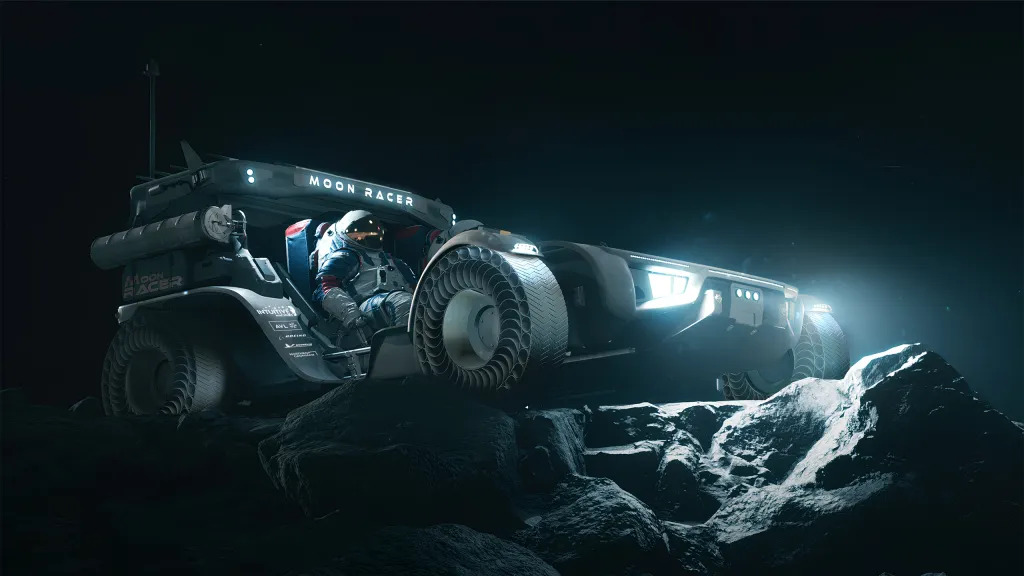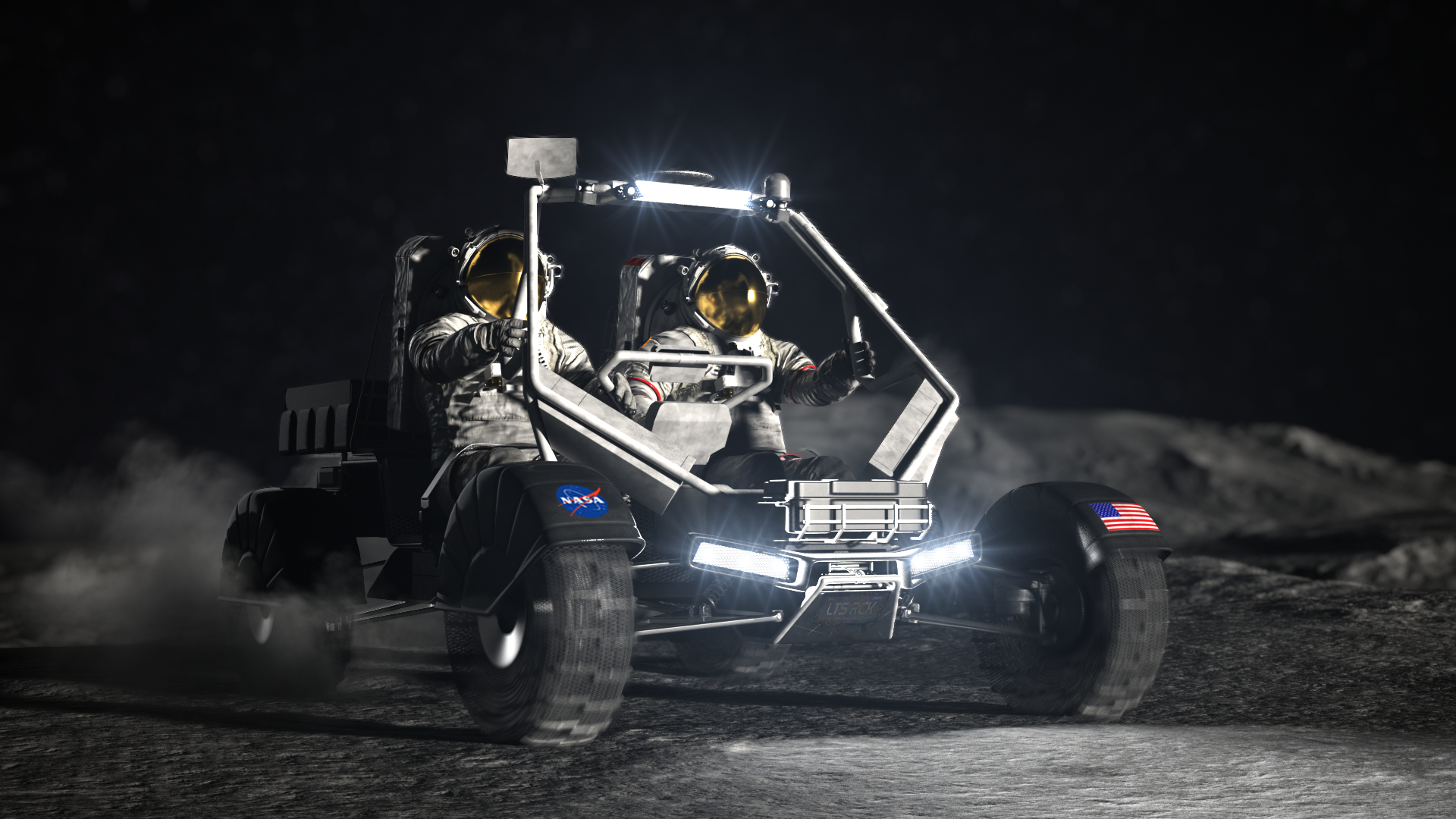One of three concepts set for development is a self-driving lunar terrain vehicle.
NASA has revealed the lunar buggy concepts expected for development in preparation for its forthcoming crewed missions to the Moon.
One of the vehicles showcased is the self-driving ‘Moon RACER,’ designed by US startup Intuitive Machines. This innovative buggy is engineered to transport both people and cargo across the lunar surface.

In addition, the US space agency has granted Intuitive Machines $30 million to spearhead the development and deployment of the Moon RACER, an acronym standing for Reusable Autonomous Crewed Exploration Rover.
Steve Altemus, CEO of Intuitive Machines, stated that the contract encompasses up to 10 years of lunar surface operations.
NASA intends to utilise lunar vehicles for crewed operations, starting with the Artemis V mission, which is currently scheduled for March 2030.
“This vehicle will significantly enhance our astronauts’ capacity to explore and conduct scientific research on the lunar surface, while also serving as a scientific platform during intervals between crewed missions,” stated Vanessa Wyche, director of NASA’s Johnson Space Center in Houston, Texas.
Expanding Lunar Exploration: LTV Concepts by Lunar Outpost and Venturi Astrolab
Additional lunar terrain vehicle (LTV) concepts for development include buggies crafted by Lunar Outpost and Venturi Astrolab. Each vehicle is mandated to possess autonomous capabilities, ensuring NASA’s continued utilisation even in the absence of astronauts onboard.
“We will employ the LTV to journey to locations that may be beyond our reach on foot, thereby augmenting our capacity to explore and unearth new scientific findings,” said Jacob Bleacher, chief exploration scientist in the Exploration Systems Development Mission Directorate at NASA’s Washington headquarters.

“Through the Artemis crewed missions and remote operations, even in the absence of a crew on the surface, we are facilitating continuous scientific exploration and discovery on the Moon throughout the year,” stated the NASA representative.
Additionally, the announcement arrives merely two weeks following the approval by the US Defense Advanced Research Projects Agency (DARPA) for the development of a lunar rail network, aiming to interconnect various lunar bases.
The introduction of transportation infrastructure on the Moon signifies a significant paradigm shift for the lunar economy, as stated by DARPA program manager Michael Nayak.
Apart from that, China is planning for manned expeditions to the Moon by the end of the decade, together with many private companies and startups that want to transport cargo the lunar surface.
Therefore, this increase in activity, occurring more than five decades after the last humans walked on the Moon, is expected to energise the lunar economy.
Estimates from the European Space Agency suggest that the lunar economy could be worth €142 billion (£120bn) by 2040. Furthermore, plans to leverage the Moon as a launch site for missions to Mars could boost its value even higher.


